How Much Exercise Is Too Much for a Puppy?
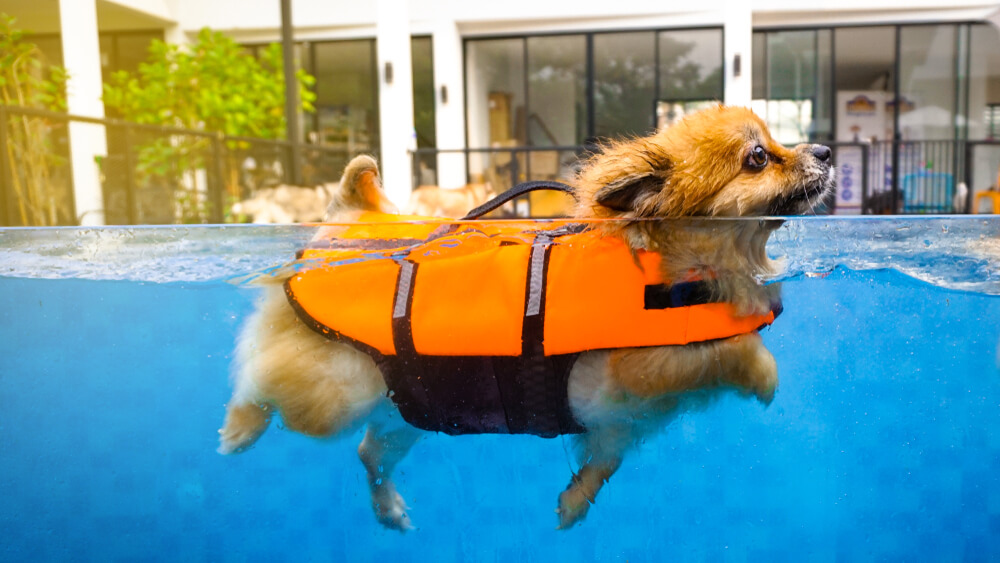
Table of Contents
Listen To The Article
Introduction to How Much Exercise Is Too Much for a Puppy?
When you get a puppy at your home, you will want to make sure it stays healthy and exercises a lot.
Puppies love to run around and play, so it’s up to you to make sure you have the proper amount of exercise for your puppy.
Too much exercise, or playing too rough, can cause harm to your puppy.
You’ll need to know when it’s time to stop and rest.
Have you been exercising your puppy and wondering if you should cut back? Puppies may look like they are having fun when you play with them, but they are building their strength and endurance.
It’s important to let them build up their muscles, bones, and heart and lungs capable of supporting a healthy, active adult life.
This doesn’t have to be all at once, but do try to spread it out over the day.
Exercise and play are important parts of a puppy’s day, and it is important to know how much to do and how hard to play.
Exercising a puppy too much or too hard can cause health problems, such as bone and joint problems. However, not enough exercise can make a puppy fat and lazy and can cause them to have behavior problems.
How much you exercise your puppy or dog depends on their age, health, and whether they are spayed or neutered.
Exercise is as important for your dog as it is for you. Exercise can help to prevent obesity, is great for socialization and behavioral development can help to prevent unwanted behaviors such as digging, chewing, barking, rough play, it can help with both digestive and cardiovascular health and aids in muscle development and agility.
In fact, studies have shown that free play in puppies prior to 12 weeks of age can actually decrease their chance of developing hip dysplasia.
Here’s how to tell if your puppy is getting the right amount of exercise.
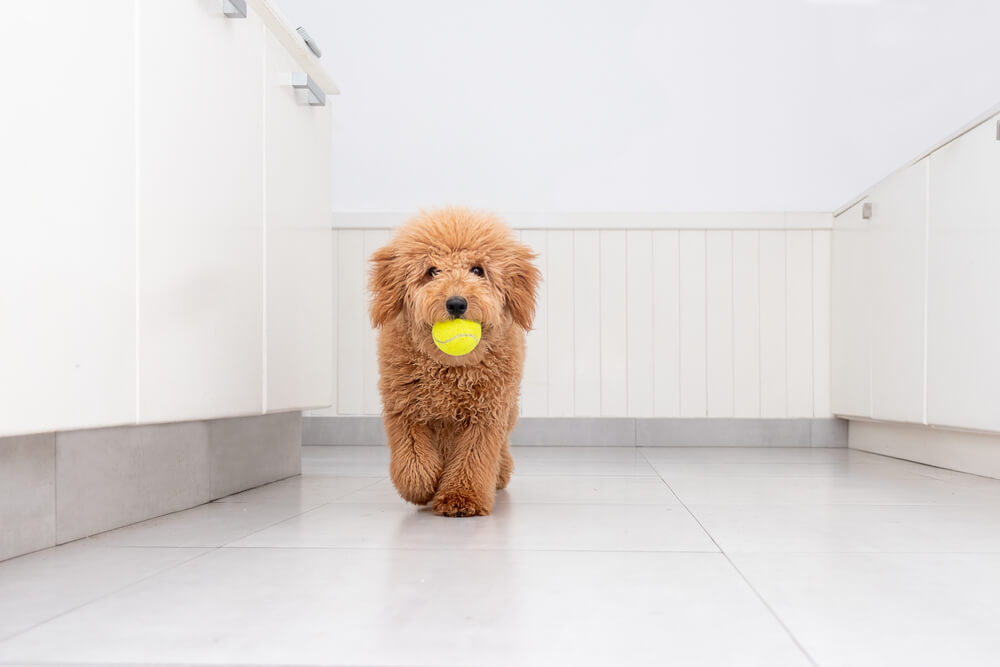
Why You Should Limit Exercise?
Veterinarians often give different recommendations for how much exercise puppies should be getting, I’ve even heard they should get five minutes of daily exercise for each month of age.
You might be laughing if you realize a nine-month-old Boxer should be getting less than an hour of exercise each day at an age where they are at peak bounciness.
The reason for this rule, though, is because excess exercise in puppies who have not had their growth plate close (typically anywhere from eighteen to twenty-four months of age) can cause lifelong disabilities.
While exercise is excellent to prevent diabetes, obesity, and future heart problems, too much at the wrong age can cause hip dysplasia, movement disorders, and an increased chance of fractures.
Many pet parents of sport or work breeds want to get a head start on event training with an early introduction to obstacle courses and athletic training, others are blessed with a high-energy pup and are just trying to wear out their furry tornado.
While the choice to start your pup on an early exercise routine is up to the individual, it is important to realize that moderation is key to prevent lasting harm.
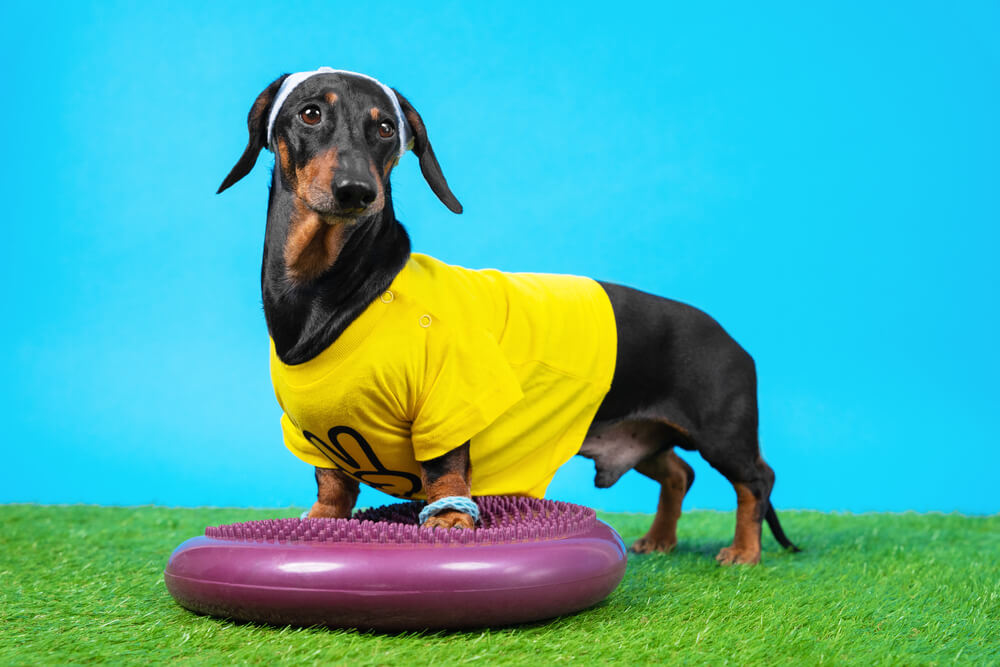
When You Should Encourage Exercise?
Just because you need to limit puppy exercise does not mean you should lock them up like Rapunzel.
Exercise is still the best way for your puppy to learn play behaviors, socialize with other dogs and humans, and create a bond with their new family.
Training sessions are also an excellent time to include play and exercise as a way to keep learning fun for your dog.
Exercise should be encouraged in short sessions with plenty of breaks when your puppy is still young.
As long as athletic games like playing fetch or chase are puppy-led and stop when they stop, your puppy will self-regulate themselves within their comfort zones.
As your puppy gets older they will have greater endurance and be up for longer periods of activity and be able to go further.
Activities that do not allow your puppy to easily stop, like jogging, prolonged hiking, or obstacle courses that put severe pressure on their bones, should be discouraged as it does not let them stop when they feel uncomfortable.
If your puppy is choosing to flop down beside you instead of begging you to throw the ball again, is panting heavily, limping, or is moving slower than normal, it is time to hit the park bench.
Dogs are also excellent actors when hiding symptoms of an injury, so if you have been exercising heavily for more than thirty minutes consider taking a break and thoroughly checking your pup for tenderness or swelling.
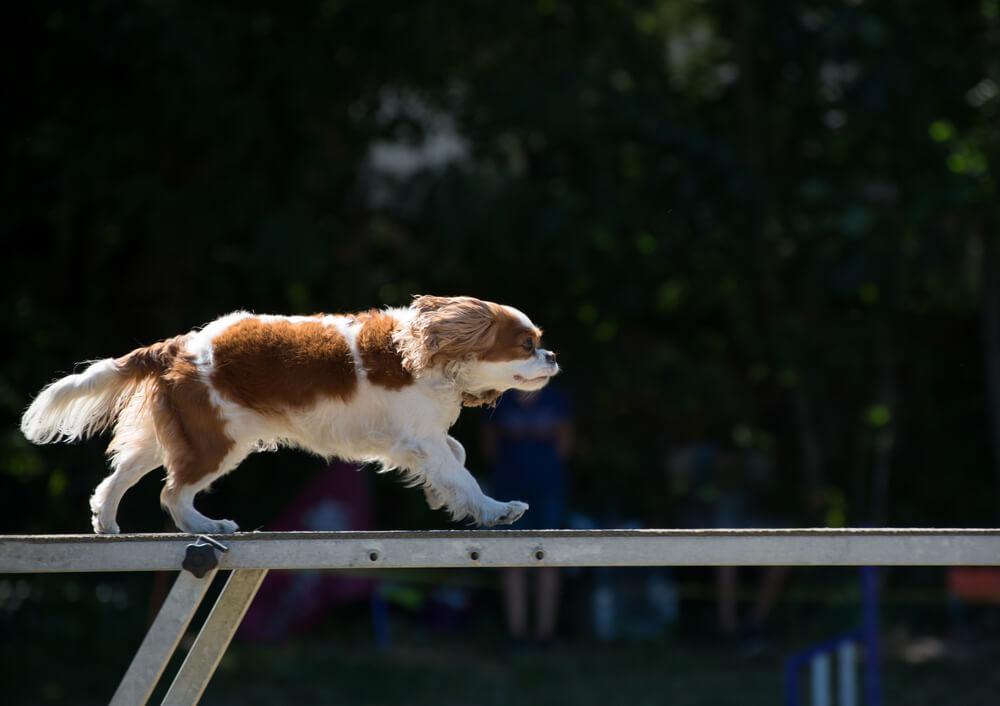
What Type Of Exercises Should
Our Puppy Be Doing?
Games are an important part of a puppy’s exercise as they help to develop them mentally and to improve their bond with us.
- Tug of war games – make sure you hold the toy low to avoid pressure on the neck and allow the puppy to pull, rather than you tugging your puppy.
- Fetch – only throw toys along the ground so that the puppy doesn’t leap into the air and land awkwardly which may injury joints/bones.
- Food-related play – fill a wobbly Kong or a treat ball with food, hide treats or make a treat trail, so that your puppy uses both physical and mental exercise. Make sure to reduce his/her overall food portion so that they are not overfed.
Allow lots of free play in an enclosed space as their can then regulate both their own pace and rest when they get tired.
It’s important that puppies can sniff and explore their surroundings.
Make sure they are fully vaccinated if they are away from home where other dogs can access.
Allow free play with other dogs but make sure they are well-matched, as injuries can easily happen with a large or very exuberant playmate.
Size is obviously an important consideration, but in addition, an energetic dog (small or large) may injure your puppy with body slams and excessively rough play.
Monitor the play and be ready to intervene if needed.
To get the maximum benefit from training, only do exercises in short bursts as puppies quickly tire and their concentration span rapidly wanes.
Digging is also a great way to tire your puppy out. I have a sandpit at home and my young dog loves nothing better than a good dig.
Another alternative is an area of your garden with soft soil (and no plants), that they are allowed to dig in.
If you are planning on a long walk and you have a smaller breed puppy, you can carry them as soon as they get tired.
Another alternative with larger puppies would be to invest in a buggy which still allows them to explore the wider world but to rest when they tire.

Which Exercises Should My Puppy Avoid?
Forced exercise such as excessive running, biking, or fast-paced walks where your dog is not able to stop and rest.
If they do stop, then allow them time to rest and wait until they are ready to get up again, or head home.
Also exercising on the softer ground has less impact on joints, compared with hard surfaces such as concrete.
Excessive fetching of balls or frisbees and agility especially if they are leaping into the air and landing with high impact on their joints.
Repetitive jumping such as off beds or couches either try to avoid this or make sure there are heavy carpet pads where they land to cushion the impact.
If they climbed stairs daily before the age of 3 months, they had a higher incidence of hip dysplasia.
Preferably supply a ramp with a non-slip surface that is not too steep or carry your puppy up the stairs whilst they are still young.
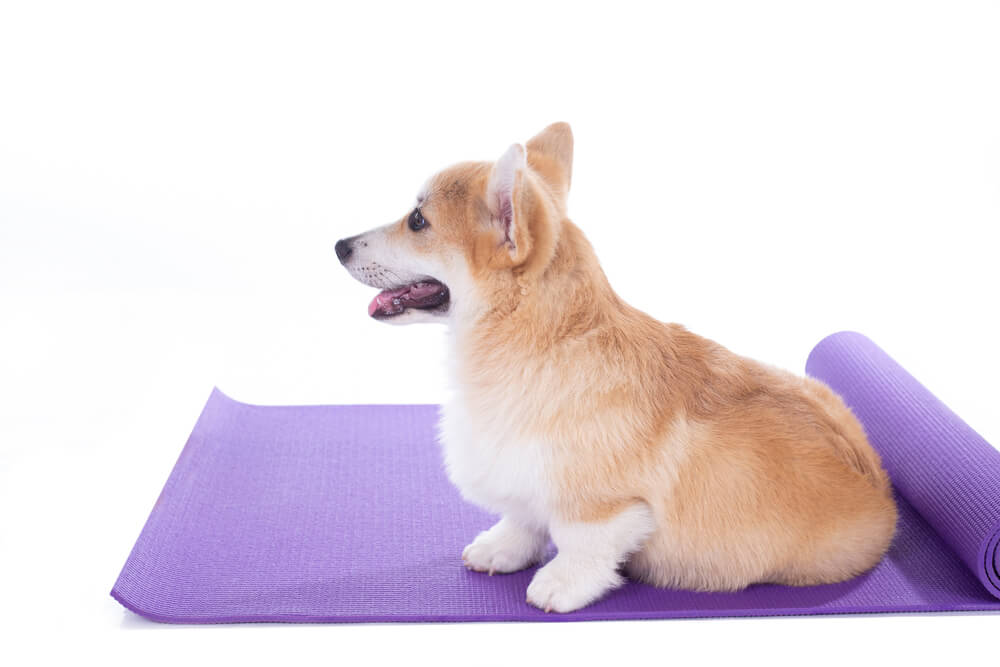
Signs Of Getting Too Much Exercise
Moderation is key.
Much of the time it is not the length of time performing the task, it is the intensity and impact of the activity that matters.
Walking is much less likely to trigger distress in a dog with heart disease compared with running, jumping, or hard play.
If you’d like to start your dog on an exercise regimen or just want to make sure your current one is sensible.
Experts stress the importance of working with your dog’s vet to create an individualized exercise plan especially if your dog has health conditions, is old or young, or is a breed that doesn’t tolerate intense exercise very well.
Wear-and-Tear on Paw Pads
Some dogs will run until the pads on their feet tear and will then run some more.
Pad injuries can be extremely painful, who is board-certified in veterinary sports medicine and rehabilitation and pain management.
It’s like walking on a ruptured blister on the bottom of your foot. Dogs can’t get off their feet as easily as we can, which makes any and all walking torturous.
Look at the bottom of your dog’s paws.
Overworked pads may have tears with visible flaps of skin present, may appear red, worn away, or thinner than normal. If infected, you may see swelling or pus.
Think of concrete as being like sandpaper.
It can damage the pads of a running, spinning, jumping dog, whose professional interests include preventative care.
Sudden stops can also create paw pad injuries if the sliding stop is performed often enough to wear off the tough outer layer of the pad, who is board-certified in veterinary surgery and veterinary sports medicine and rehabilitation.
Sore Muscles
Muscular pain and stiffness is another sign your dog may be getting too much exercise, This typically shows up after the dog rests following excessive exercise.
When the dog is ready to get up, the owner may notice a struggle.
The dog may refuse to walk up or downstairs, may refuse the next meal because it hurts to reach down to the floor to the food dish.
She may even cry out when first moving about.
As the muscle dies, it causes excruciating and generalized pain.
The breakdown products can, in turn, lead to kidney damage or failure.
You can help reduce soreness and stiffness by unsubscribing to weekend warrior syndrome.
Many owners work all week and try to fit in a week’s worth of exercise into two days off.
This is not good for the dog because they are usually not properly conditioned but will push through warning muscle and joint pain and fatigue for playtime and owner time.
Some dogs have such a strong drive to work and play that they’ll push through severe fatigue and potential injury.
It is up to the owner to set boundaries and limit the high-drive dog to avoid over-exercise-related injury and exhaustion.
Heat Sickness
Heat exhaustion and heat stroke are especially a concern during warmer months when dogs can overheat.
If the body temperature increases to above 106 degrees, it can be life-threatening.
Aside from causing potentially life-threatening hyperthermia, dogs can also become dehydrated or have difficulties breathing.
Very young and old dogs have difficulty regulating their body temperatures, so too much exercise can cause them to overheat as well.
Joint Injury
The impact associated with extreme exercise can cause strain and sprain in various dog joints.
Toe joints are particularly susceptible, but the wrist and elbow are also at-risk.
Dogs carry about 60 percent of their weight on their front limbs, which puts quite a bit of stress on those joints.
In dogs with very straight rear legs, excessive exercise can lead to problems in the stifle (knee) joints, including strain, sprain, meniscal tears, and tears in the cranial cruciate ligament.
Some dogs are at greater risk of developing joint injuries.
Breeds who are long and low to the ground.
Young puppies (especially large and giant breeds) need some exercise, but not too much as it can result in joint problems later in life.
A dog who has sustained a leg injury may limp or favor one leg over the other, who is certified in canine rehabilitation.
Dogs will sometimes put their head down when walking on the good leg and raise their head up when they’re walking on the bad leg.
Behavioral Changes
Inconsistent conditioning can contribute to this and to injuries.
Playing off-leash for one hour does not mean one hour of exercise.
Most dogs will have bursts of activity and then rest when off-leash and left to their own devices.
Being free to run and play in the backyard five days a week and then expected to jog with an owner 10 miles one day is a recipe for injury.
A good conditioning plan for active pet parents and their dogs is to alternate days of cardio exercise (consistent exercise for 20 minutes or more) and strengthening with one full day of rest, which is a free day with no planned activities.
Dogs need exercise to maintain peak physical and mental well-being, but the type they should get depends on their condition, health history, breed, and age.
Some dogs are built for heavy exercise while others are not.
Hunting and working dogs have more endurance than brachycephalic breeds.
The hunting and working dogs can exercise for a much longer period of time before showing signs of being tired.
It’s good to know the signs of over-working your dog, but it’s even better to prevent issues and the best way to do this is by working with your vet to create a sensible exercise plan for your best pal.
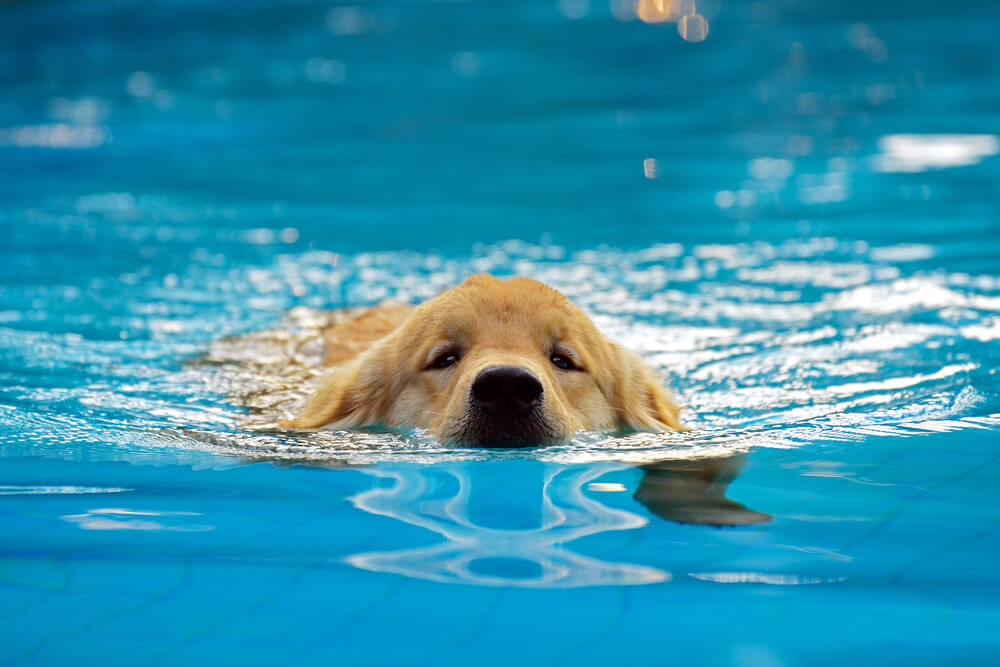
Exercise Is Healthy For Your Puppy
Healthy exercise for puppies doesn’t mean you have to give up your favorite activities, just take into account your small partner’s abilities.
Several activities are excellent for a puppy to engage in, both as teaching moments and as bonding experiences with people.
You can take them, or have others take them, for walks.
Puppies at every age need the stimulation and exposure to new experiences that walks bring them.
Try starting your puppy out at fifteen-minute walks with them choosing the pace, which offers an excellent time to work on leash manners.
As your puppy gets older, they can enjoy more short walks throughout the day to help them expend energy.
Interactive play is when both you and your puppy engage in an activity that involves giving and take.
Through this type of play, your puppy will learn about your body language, how to interact outside their littermates, and will build their relationship with you.
Always play with your dog by chewing appropriate materials to avoid your puppy getting used to biting hands, and go to town with fetching, tug of war, ‘attack the teddy’, and squeaker toys.
Use training to make your pup get up and around.
Practice your recall technique by running to one side of the yard and calling them over, practice the ‘fetch’ and ‘drop it’ commands with fetch, and encourage them to take a break with ‘lay down and ‘sit’.
If you keep these training sessions fun and stop when your puppy loses interest, it can be a good way to both reinforce commands and burn off some energy running from one place to another.



